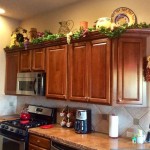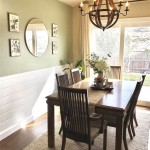Simple Classroom Decoration Ideas to Foster a Positive Learning Environment
Creating an engaging and stimulating classroom environment is crucial for student learning and well-being. The physical space where students spend a significant portion of their day can significantly impact their motivation, focus, and overall academic performance. Effective classroom decoration doesn't necessarily require extensive resources or artistic expertise. Simple, well-planned decorations can transform a mundane space into a vibrant and inspiring learning zone.
The aim of classroom decoration should always be to enhance the learning experience, not to distract from it. Decorations should be age-appropriate, relevant to the curriculum, and designed to promote a sense of community and belonging among students. A thoughtfully decorated classroom can contribute to a positive classroom culture, making it a more welcoming and enjoyable place for both students and teachers.
Utilizing Student Artwork and Projects
One of the simplest and most effective ways to personalize a classroom is by showcasing student work. This not only adds color and visual interest but also validates students' efforts and fosters a sense of pride in their accomplishments. Displaying artwork, writing samples, and project results can create a sense of ownership and encourage students to strive for excellence.
Consider dedicating specific areas of the classroom to student displays. A designated bulletin board for "Student of the Week" or "Work of the Month" can provide individual recognition. Alternatively, create thematic displays showcasing projects related to specific units of study. For example, if the class is studying ecosystems, the display could feature student-created dioramas, posters, and research reports about different ecosystems.
When displaying student work, ensure that it is presented neatly and attractively. Use consistent borders, labels, and mounting techniques to create a cohesive and professional look. Rotate the displays regularly to keep the classroom environment fresh and to ensure that all students have the opportunity to have their work featured. Another approach is to create a digital display of student accomplishments using a projector or interactive whiteboard.
In addition to displaying finished products, consider showcasing the process of learning. Displaying drafts, brainstorming notes, and works-in-progress can provide insights into the learning process and encourage students to embrace experimentation and revision. This approach can also help to demystify the learning process and highlight the importance of effort and perseverance.
Incorporating Educational and Informative Displays
Classroom decorations should not only be visually appealing but also serve an educational purpose. Incorporating displays that reinforce key concepts, provide useful reference information, or promote critical thinking can enhance the learning experience and make the classroom a more engaging and informative environment. These displays can range from simple charts and diagrams to interactive displays that encourage student participation.
Consider creating visually appealing displays of essential vocabulary words, grammar rules, or mathematical formulas. These displays can serve as quick reference tools for students and reinforce key concepts throughout the year. Use color-coding, graphic organizers, and clear, concise language to make the information easily accessible and memorable. It's important to update these displays periodically to reflect the current curriculum.
Another effective strategy is to create interactive displays that encourage student participation. For example, a "Question of the Day" bulletin board can prompt students to think critically about a specific topic and share their ideas. A "Word Wall" where students can add new vocabulary words they encounter can promote vocabulary development. These interactive displays can foster a sense of ownership and encourage students to take an active role in their learning.
Maps, timelines, and historical figures are also valuable additions to a classroom. A world map can help students develop a sense of global awareness, while a timeline can provide a visual representation of historical events. Posters featuring influential figures from different fields can inspire students and promote diversity and inclusion. When selecting educational displays, consider the specific needs and interests of your students and the curriculum being taught.
The use of infographics is beneficial. Infographics translate complex data into visually understandable formats. For instance, a visual representation of the water cycle, the food chain, or the process of photosynthesis can aid comprehension significantly. These types of educational displays are both decorative and informative, serving a dual purpose.
Creating a Welcoming and Organized Space
Creating a welcoming and organized classroom environment is essential for fostering a positive learning atmosphere. A cluttered and disorganized classroom can be distracting and stressful for both students and teachers. By paying attention to details such as lighting, seating arrangements, and storage solutions, it's possible to create a space that is conducive to learning and promotes a sense of calm and well-being.
Consider the arrangement of desks and other furniture. Flexible seating arrangements can promote collaboration and active learning. Grouping desks together can encourage peer interaction, while individual desks can provide a space for focused work. Ensure that there is adequate space for students to move around the classroom and that all areas are easily accessible.
Effective storage solutions are crucial for maintaining a clean and organized classroom. Label shelves, drawers, and containers clearly to make it easy for students to find and return materials. Utilize vertical space by installing shelves or bulletin boards. Color-coded bins or baskets can help to organize different types of materials and make it easier for students to manage their belongings.
Lighting is another important factor to consider. Natural light is ideal, but if natural light is limited, use artificial lighting to create a bright and inviting atmosphere. Avoid harsh fluorescent lighting, which can be tiring and distracting. Instead, opt for softer, more diffused lighting that creates a warm and welcoming ambiance.
Adding personal touches can make the classroom feel more welcoming and inviting. A plant, a comfortable reading nook, or a collection of inspirational quotes can help to create a space that feels like home. Encouraging students to personalize their workspaces with photos, artwork, or other meaningful items can also contribute to a sense of belonging and ownership. Additionally, consider the color scheme of the classroom and choose colors that are calming and conducive to learning. Soft blues, greens, and yellows can create a relaxing atmosphere, while brighter colors can add energy and vibrancy.
A designated quiet area can offer students a space for reflection and emotional regulation. This could be a corner with comfortable seating, soft lighting, and calming visuals. Providing a sensory bin with tactile items like sand or beads can help students manage anxiety and promote focus. The inclusion of such spaces acknowledge the diverse emotional needs of learners.
A well-organized teacher's area is crucial for efficient instruction. Clear labeling of files, resources, and materials allows for quick access and minimizes wasted time. A dedicated space for planning and grading helps to maintain focus and productivity. This organization benefits not only the teacher but also sets a positive example for the students.
In summary, simple and thoughtful classroom decoration can significantly impact the learning environment. By utilizing student work, incorporating educational displays, and creating a welcoming and organized space, educators can transform their classrooms into vibrant and inspiring learning zones. The key is to prioritize functionality, relevance, and student engagement when making decorating decisions.

Easy Classroom Decoration Ideas School

Classroom Decor Paper Craft Ideas For Kids Handmade Wall Decoration Art

40 Excellent Classroom Decoration Ideas

Classroom Decoration Idea Our Core Values Classdecoration Papercraft

Quick And Easy Classroom Decor

50 Best Class Decoration Ideas School Crafts Decorations

Quick And Easy Classroom Decor

Classroom Decorations School Specialty

Simple Classroom Decoration Ideas Easy And Budget Friendly Too Top Notch Teaching
Math Classroom Decoration And Bulletin Board Inspiration Rise Over Run
Related Posts







